Dark Matter Winners And Losers In The Aftermath Of LIGO

We’ve come so far since 2015; what do we know about dark matter now that we didn’t know then?
Back in 2015, the dark matter situation was pretty straightforward: the large-scale structure in the Universe demanded that there be a large amount of cold dark matter, and alternatives were struggling to reproduce those successes. Einstein’s General Relativity still needed to work on all scales, from local, Solar System-based tests up to cosmic ones, but there were no direct tests of some of its greatest, strong-field predictions. All of that changed two years ago, with the first announced detection of gravitational waves, courtesy of two merging black holes.
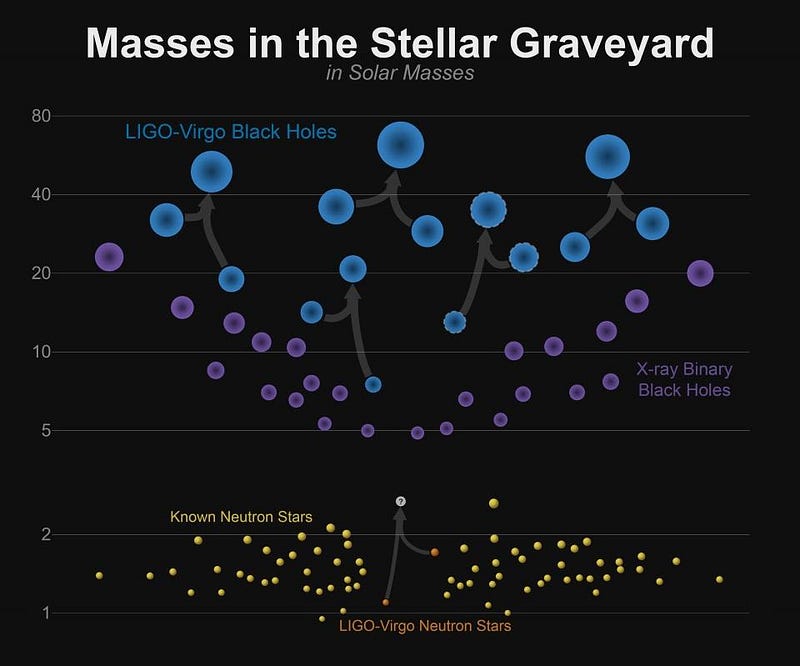
Now, as we approach the end of 2017, we’ve used gravitational wave astronomy to detect five merging black holes and a pair of merging neutron stars, a remarkable result all on its own. Yet these detections provide us with a wealth of data about dark matter and its alternatives, replete with winners and losers. In the context of the full suite of evidence, here’s what we know.
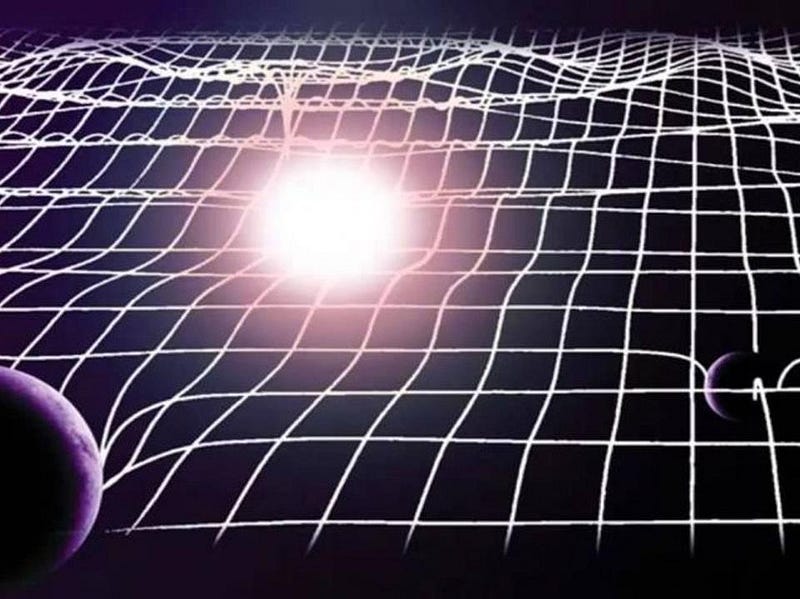
Winner: Einstein’s General Relativity. First set forth in 1915, Einstein’s theory made explicit predictions for the relationship between spacetime and matter/energy, including a novel prediction about the propagation of gravitational ripples through the fabric of space itself. Any mass moving through a region of spacetime whose curvature is changing should emit gravitational radiation of a specific amplitude and frequency, and that radiation should propagate at the speed of light, distorting space as it passes through. For 100 years, that prediction went untested, until the twin LIGO detectors began seeing their first bona fide events.
Earlier this year, they observed a neutron star merger, also seen across the electromagnetic (light) spectrum. We now know that the arrival time of gravitational waves and light from a singular event differs by no more than 1 part in 1015, confirming relativity’s predictions that the speed of gravity equals the speed of light to a precision never before seen.
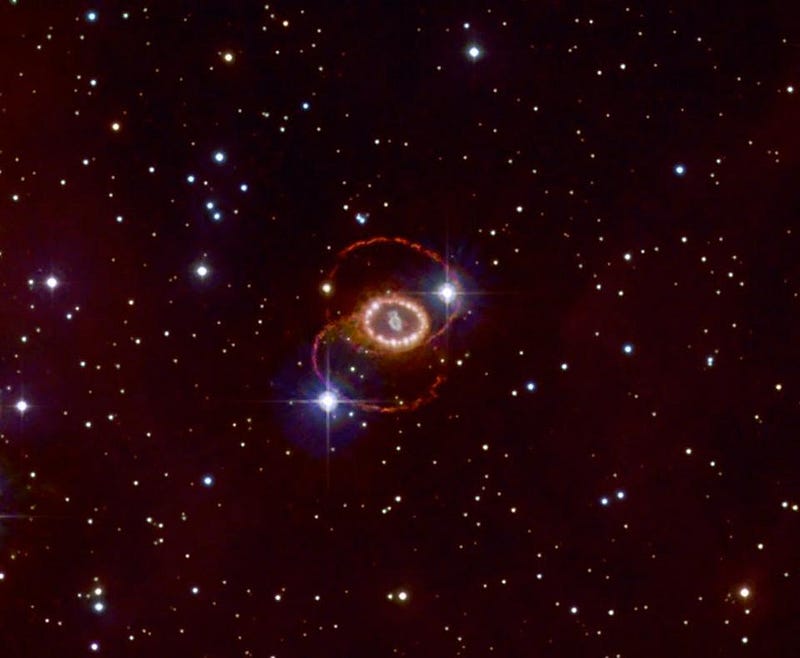
Loser: Modified gravity theories where gravity and light obey different rules. There are plenty of ideas out there that the reason there are so many instances where gravity and light don’t match up is because Einstein’s General Relativity isn’t quite right, and that the laws of gravity need to be modified. These theories of modified gravity attempt to do away with dark matter, replacing them with a new law of gravitation. Yet many of the alternatives proposed, in order to solve the problems that dark matter solves, lead to a situation where gravitational waves and light waves propagate through space differently. Those theories that do so are now ruled out, and this includes some of the most promising alternative theories of gravity, such as Bekenstein’s TeVeS.
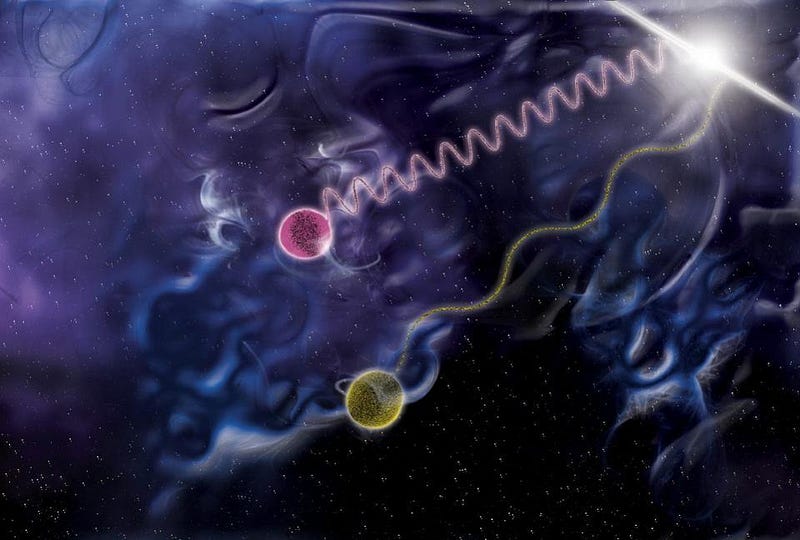
Loser: Variable speed of light cosmology. If the constraints are that gravitational waves and the speed of light must be equal to one part in 1,000,000,000,000,000, then the speed of light couldn’t have varied by more than that amount over at least hundreds of millions of years. If you want to change the speed of light, then you’d have to change the speed of gravity as well, and there are tight constraints on combinations of G, c, and h (Planck’s constant), the last of which is not allowed to vary due to the consistency of atomic spectra. Some instances of these models attempt to do away with dark matter or dark energy; owing to LIGO, it’s now known that most of these models will not work. In many ways, the idea that the speed of light varies over cosmic times has taken a tremendous hit from LIGO’s observations.
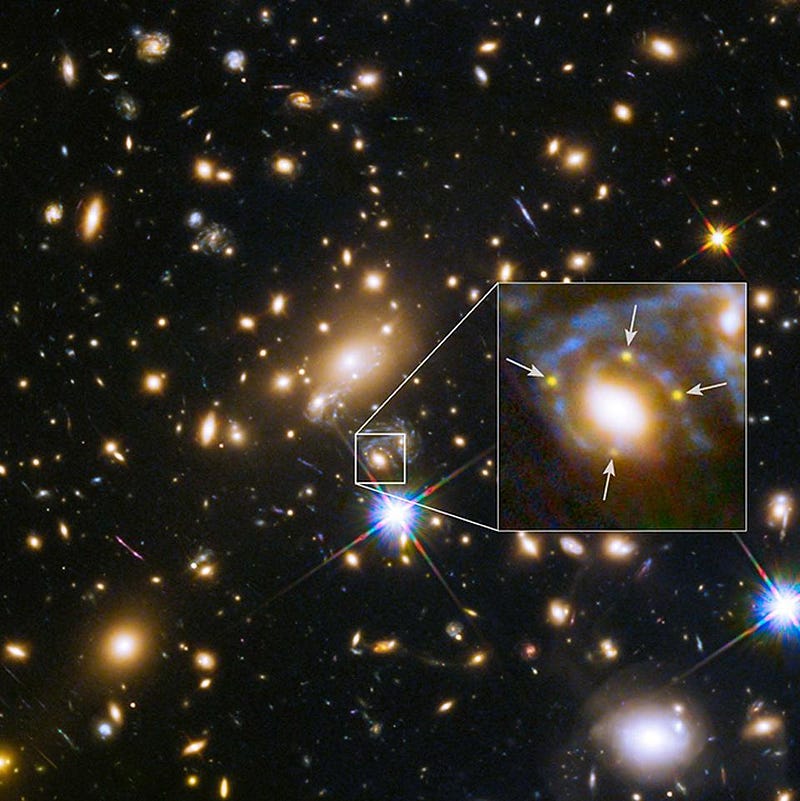
Winner: Cold dark matter. Particularly from the neutron star mergers 130 million light years away, there ought to be a delay in the arrival time of the gravitational wave signal due to intervening matter on the order of a few hundred years. The fact that the arrival of both light waves and gravitational waves were delayed by the same amount provides further evidence for dark matter, especially considering that a quadruply-lensed supernova had already been observed in light waves, demonstrating that dark matter delays the arrival time of light signals. If there were no dark matter, this behavior should be vastly different; our gravitational wave observatories have provided further, independent evidence that dark matter is real.
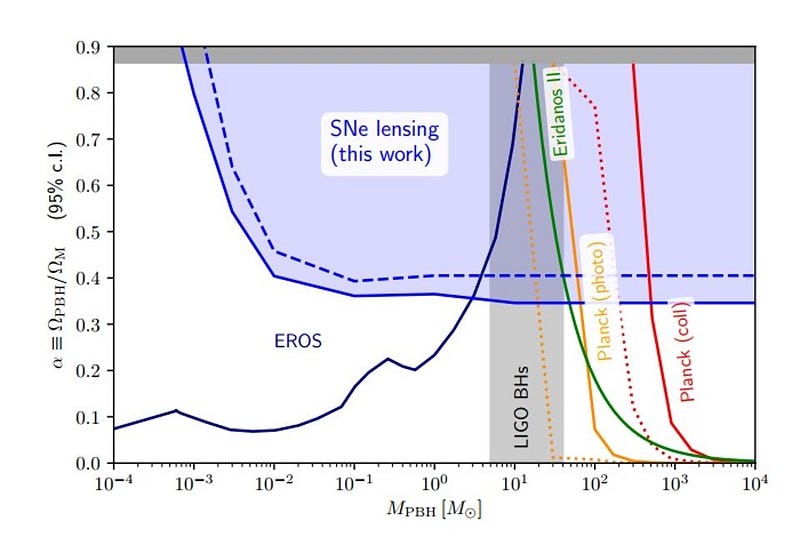
Loser: Primordial black holes as dark matter. A fringe idea has always been that perhaps dark matter isn’t particle-based, but rather is made out of black holes that were formed shortly after the Big Bang. While there haven’t been any demonstrated mechanisms that could produce large amounts of black holes of a particular mass value while leaving the rest of our cosmic large-scale structure unchanged, it the duty of observations to rule an idea out. Previously, a series of constraints had been imposed from a variety of cosmic sources, but discoveries of binary black holes in the range of 10–100 solar masses revived the idea that black holes could be dark matter.
In a new paper out just last week, however, Miguel Zumalacarregui and Uros Seljak showed that the effects of black holes, supernovae, and light propagation all work to rule out the majority of dark matter being in primordial black holes of this particular mass range. There is no way primordial black holes in the mass range that LIGO is sensitive to could be even a majority of the dark matter.
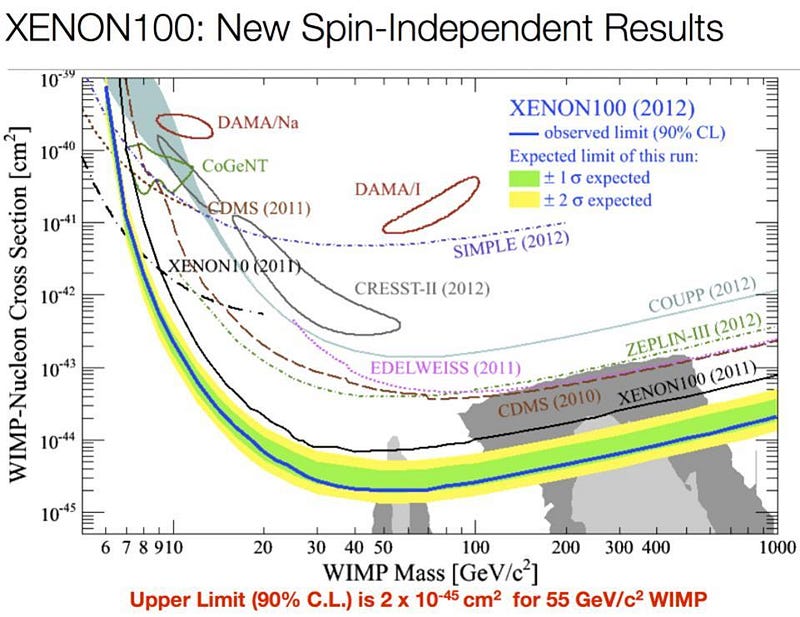
Loser: WIMPs in general, and supersymmetry in particular. As compelling as the cold dark matter explanation is, the most common candidate we’re seeking is a WIMP: a weakly interacting massive particle. Extensive direct detection searches are ongoing, both at the LHC (where we look for missing mass/energy in a collision) and in isolated recoil detectors. The bounds on these particles are now so extreme that the supersymmetric WIMPs, originally designed to solve other problems (such as the hierarchy problem in physics) can no longer solve them in the allowable mass range. When the LIGO results are taken in combination with the results from the LHC and other experiments, it’s looking grim for WIMPs.
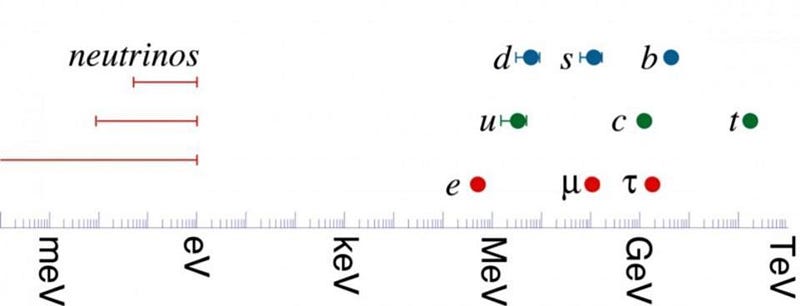
Winner: Massive neutrinos. The first (and only) evidence of a particle physics phenomenon the Standard Model doesn’t explain is neutrino oscillations, implying that neutrinos have a very light but non-zero mass. Why is this? The most popular explanation is that neutrinos come in two distinct varieties, left-and-right-handed, balanced on a see-saw, and that the right-handed type has a very heavy mass fall on its side. This means the left-handed neutrinos today will be very light, while the right-handed ones make an excellent dark matter candidate. If this is true, there should be a special type of decay observed: neutrinoless double beta decay.
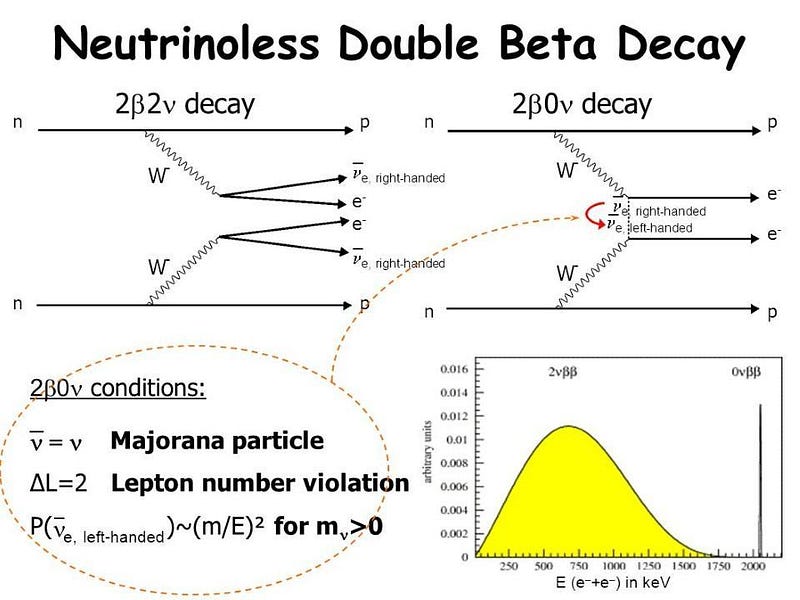
There are experiments looking for exactly this, but even more compellingly, this is a phenomenon that demands an explanation even if it isn’t the full answer to the dark matter problem. LIGO’s results are consistent with this type of dark matter, although — to be fair — LIGO itself is not very good at constraining either WIMP-based or neutrino-based dark matter. To understand what the Universe is made of, you need to look at the full suite of evidence, going well beyond what a single type of experiment/observation can tell you.
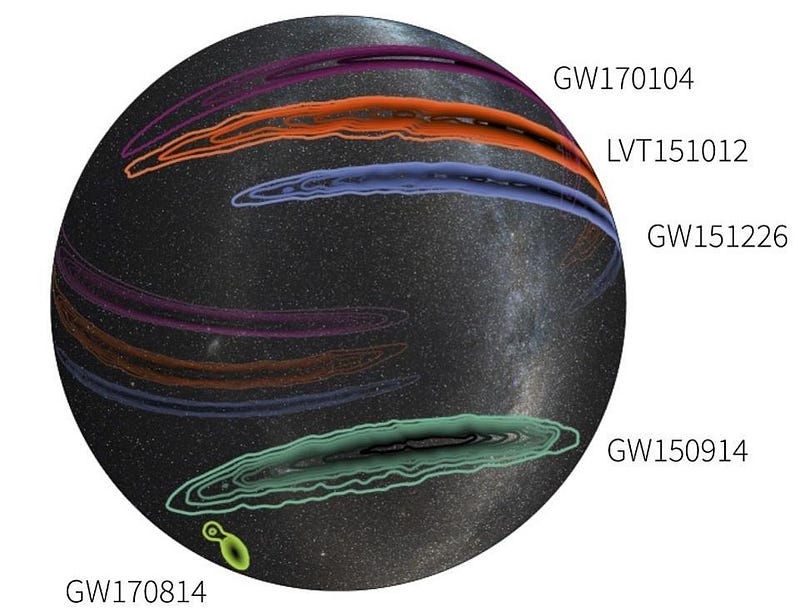
It’s still too early to say exactly what dark matter is (and what it isn’t), but it’s very easy to see what’s looking better and what requires even more special pleading in the aftermath of the past two years. General Relativity has passed another, very stringent test with flying colors: gravitational waves are real, carry energy, have the properties (amplitude, frequency, redshift, polarization, etc.) they were predicted to have, and move precisely at the speed of light. Modified gravity theories where photons and gravitational waves follow different rules are highly constrained, and primordial black holes and WIMPs, particularly supersymmetric WIMPs, are looking less and less likely.
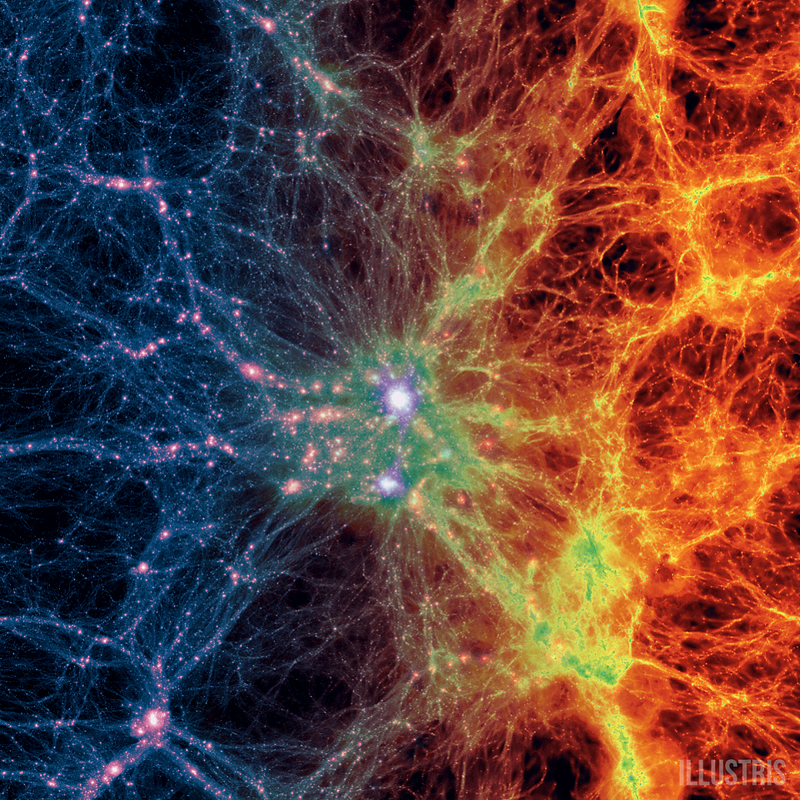
On the other hand, cold dark matter is still very much needed on a variety of scales, and the LIGO observations have done nothing to poke any sorts of holes in that idea. When you incorporate the full suite of evidence, it’s plausible that massive neutrinos — already the only known particle physics beyond the Standard Model — may hold the key to solving not only the dark matter problem, but the matter-antimatter asymmetry and could be linked to dark energy as well. It’s a transformative time for fundamental physics, and the direct observations of the Universe on the largest, cosmic scales have so much to teach us about the fundamental rules and particles governing the Universe on the smallest scales of all. Thanks to our first gravitational wave observations, we may be closer to understanding our dark Universe than ever before.
Ethan Siegel is the author of Beyond the Galaxy and Treknology. You can pre-order his third book, currently in development: the Encyclopaedia Cosmologica.





